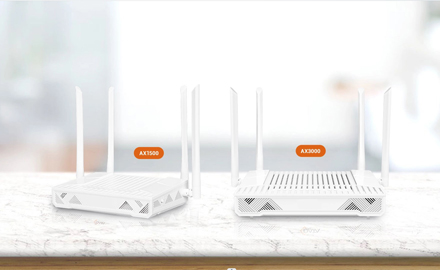As a new generation of optical access technology, XPON has huge advantages in anti-interference, bandwidth characteristics, access distance, maintenance and management, etc. Its application has attracted great attention from global operators. XPON optical access technology is relatively mature. EPON and GPON are both composed of central office OLT, user-side ONU equipment and passive optical distribution network ODN. Among them, ODN network and equipment are an important part of XPON comprehensive access, involving the construction and application of new optical fiber networks. Related ODN equipment and networking costs have become important factors restricting the application of XPON.
Concept
At present, the xPON technologies that are generally optimistic in the industry include EPON and GPON.
GPON (Gigabit-CapablePON) technology is the latest generation of broadband passive optical comprehensive access standard based on the ITU-TG.984.x standard. It has many advantages such as high bandwidth, high efficiency, large coverage, rich user interfaces, etc., and is used by most Operators regard it as an ideal technology to achieve broadband and comprehensive transformation of access network services. The maximum GPON downstream rate is 2.5Gbps, the upstream rate is 1.25Gbps, and the maximum splitting ratio is 1:64.
EPON is an emerging broadband access technology. It realizes comprehensive service access of data, voice and video through a single optical fiber access system, and has good economy. EPON will become a mainstream broadband access technology. Due to the characteristics of the EPON network structure, the special advantages of broadband home access, and the natural organic combination with computer networks, experts around the world agree that passive optical networks are the key to realizing the "three networks in one" and solving the information highway. The best transmission medium for the "last mile".
Next-generation PON network system xPON:
Although EPON and GPON have their own different technologies, they have the same network topology, similar network management structures, and are oriented to the same optical access network applications. They are not incompatible. The next-generation PON network system xPON can support both These two standards, namely xPON equipment, can provide different forms of PON access according to different needs of users, solving the problem of incompatibility between the two technologies. At the same time, the xPON system provides a unified network management platform that can manage various business needs, achieve full-service (including ATM, Ethernet, TDM) support capabilities with strict QoS guarantees, and support downlink cable TV transmission through WDM; it can also automatically identify EPON and GPON Access card addition and withdrawal; truly compatible with both EPON and GPON networks. For network managers, all management and configuration are based on services, without considering the technical differences between EPON and GPON. In other words, the technical implementation of EPON and GPON is transparent to the network management, and the differences between the two are shielded and provided to the upper layer with a unified interface. The unified network management platform is one of the biggest advantages of this system, truly realizing the unification of two different PON technologies at the network management level.
Main parameters and technical indicators
The main parameters of the xPON network are as follows:
●Multi-service support capabilities: Achieve full-service (including ATM, Ethernet, TDM) support capabilities with strict QoS guarantee. For business optimization, support downlink cable TV transmission through WDM;
●Automatic identification and management of EPON and GPON access cards;
●Supports 1:32 branching capability;
●The transmission distance is no more than 20 kilometers;
●The uplink and downlink symmetric line rate is 1.244Gbit/s. Supports port traffic statistics function;
●Support dynamic and static bandwidth allocation functions.
●Support multicast and multicast functions
Main technical indicators of xPON network:
(1) System capacity: The system has a large-capacity IP switching core (30G) that provides a 10G Ethernet network interface. Each OLT can support 36 PON networks.
(2) Multi-service interface: supports TDM, ATM, Ethernet, CATV, and provides strict QoS guarantee, which can fully include existing services. Truly support smooth business upgrades.
(3) System high reliability and availability requirements: The system provides an optional 1+1 protection switching mechanism, which fully meets the telecommunications network's requirements for network reliability, and the switching time is less than 50ms.
(4) Network range: configurable 10,20Km network path, fully meeting the requirements of the access network.
(5) Unified system management software platform: a unified network management platform for different access methods
Structure
Passive optical fiber network system is an optical fiber broadband transmission system composed of optical line terminal (OLT), optical distribution network (ODN), and optical network unit (ONU), referred to as PON system.
The PON system adopts a point-to-multipoint network structure and uses the passive optical distribution network as the transmission medium. The downlink adopts the broadcast mode and the uplink adopts the TDM mode to achieve single-fiber bidirectional signal transmission. Compared with traditional access networks, PON systems can reduce the consumption of access computer rooms and access optical cables, improve network coverage of access nodes, increase access rates, reduce line and external equipment failure rates, and improve system reliability. At the same time, maintenance costs are saved, so the PON system is the main application technology of NGB two-way access network.
Depending on the system signal transmission format, it can be referred to as xPON, such as APON, BPON, EPON, GPON and WDM-PON, etc. GPON and EPON have been deployed in large numbers around the world, and have also been widely used in the transformation of radio and television two-way networks. WDM-PON is a system that uses independent wavelength channels to form point-to-point connections between OLT and ONU. Compared with TDM-PON such as EPON and GPON, PON and WDM-PON have the advantages of high bandwidth, protocol transparency, security, reliability, and strong scalability, and are the future development direction. In the short term, due to the complex principles of WDM-PON, high device prices, and high system costs, it does not yet have the conditions for large-scale application.
Main technical indicators of xPON
① System capacity: The system has a large-capacity IP switching core (30G) and provides a 10G Ethernet network interface. Each OLT can support 36 PONs;
②Multi-service interface: supports TDM, ATM, Ethernet, CATV, and provides strict QoS guarantee, which can fully absorb existing services and truly support the smooth upgrade of services;
③ System high reliability and availability requirements: The system provides an optional 1+1 protection switching mechanism, which fully meets the telecommunications network’s requirements for network reliability, and the switching time is less than 50m;
④Network range: 10~20km network path can be configured to fully meet the requirements of the access network;
⑤Unified system management software platform: A unified network management platform for different access methods.
 The Difference Between AX1800 ONU and AX3000 ONU
The Difference Between AX1800 ONU and AX3000 ONU
 How are Huawei OLTs Classified?
How are Huawei OLTs Classified?
 The Future Trend of Optical Line Terminals (OLTs)
The Future Trend of Optical Line Terminals (OLTs)
 The Difference Between ONU and ONT
The Difference Between ONU and ONT